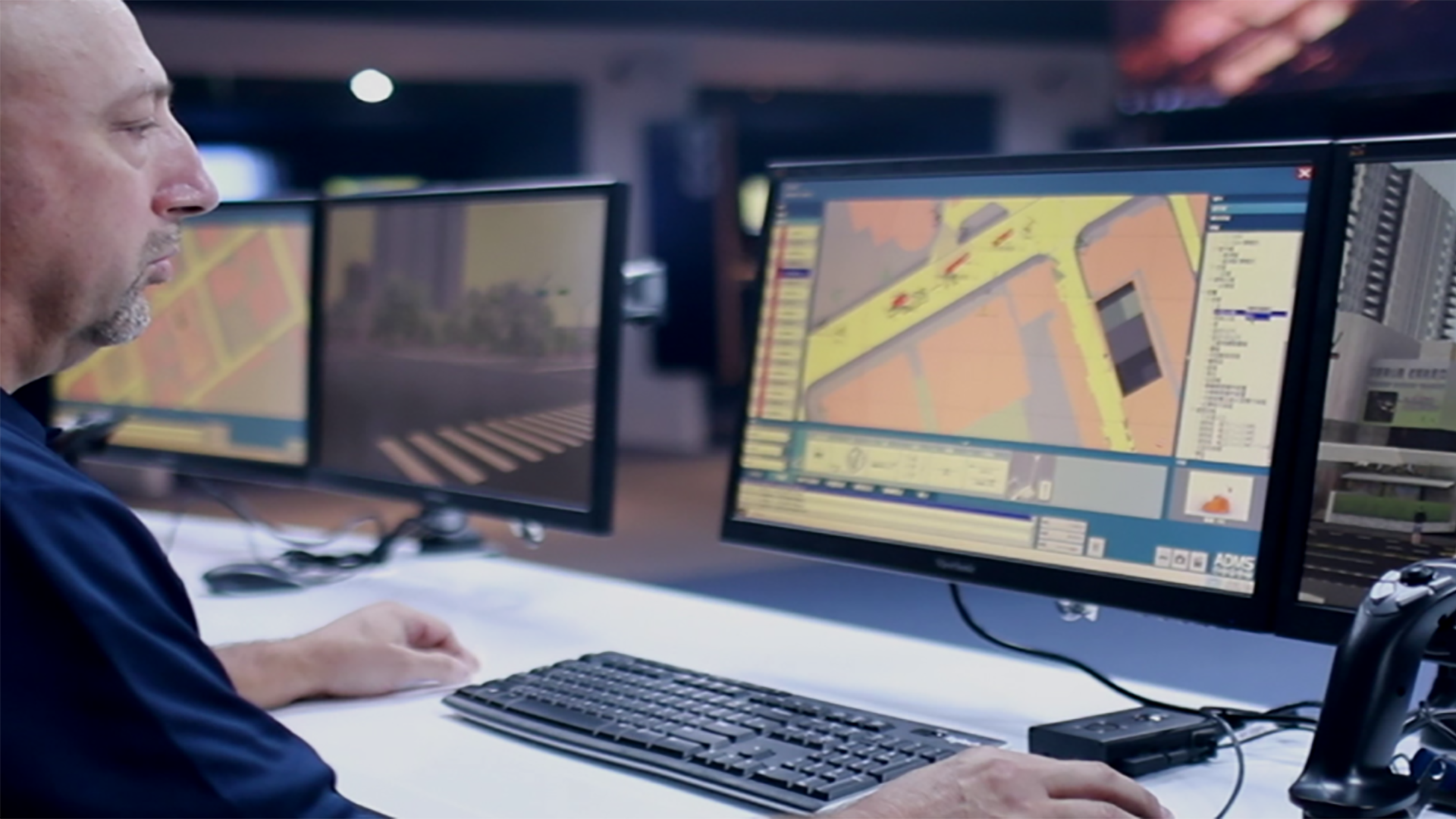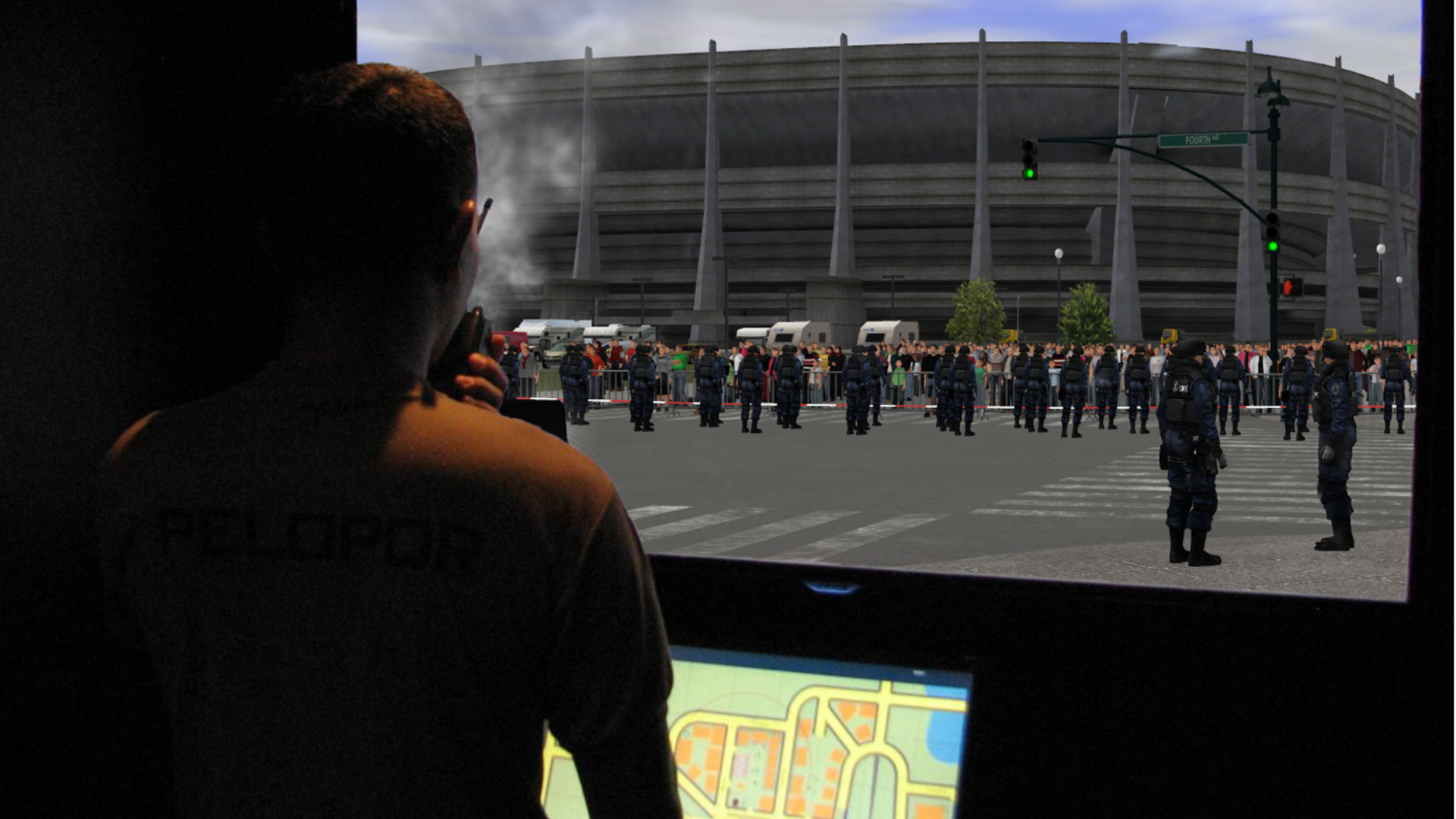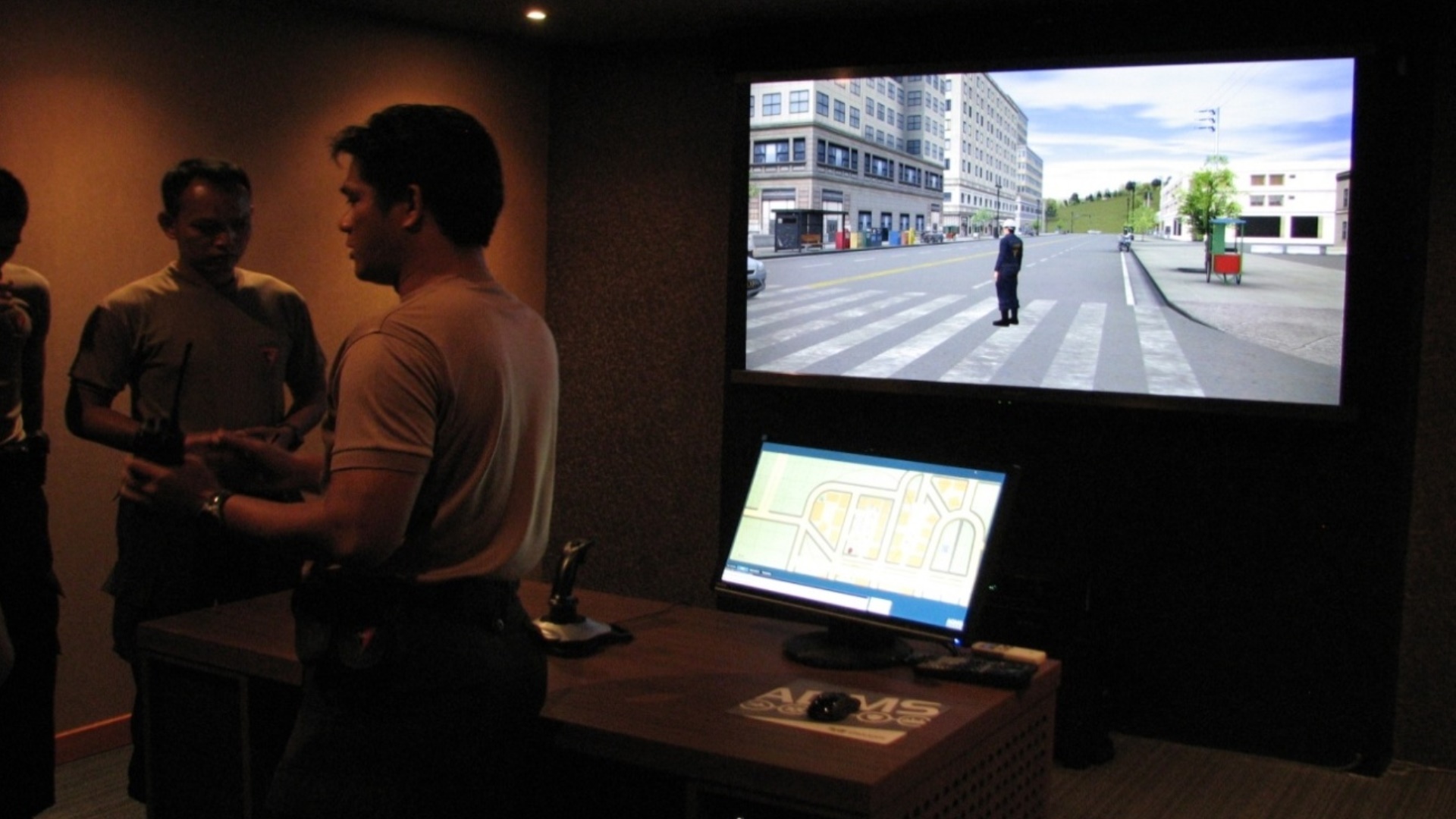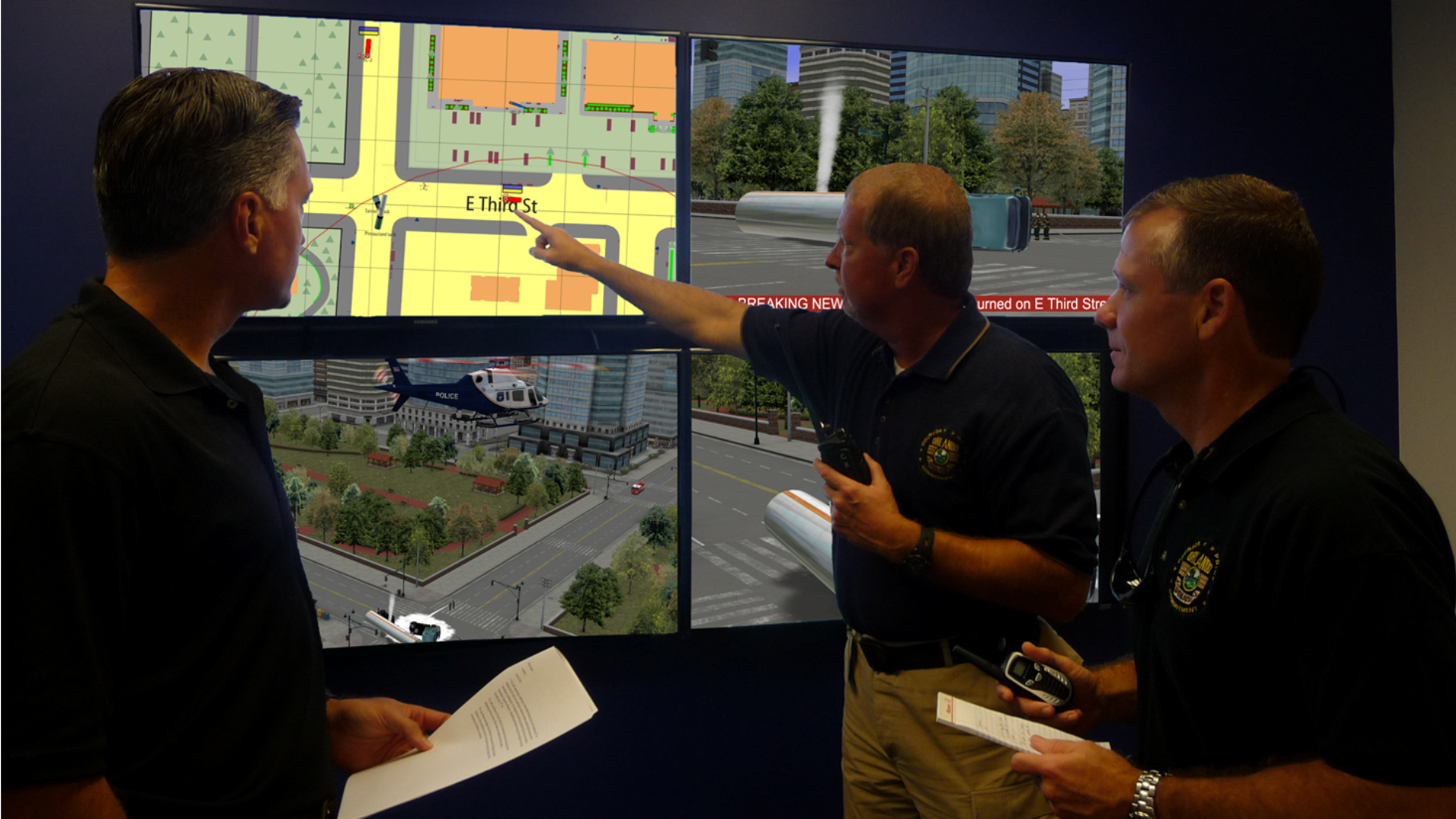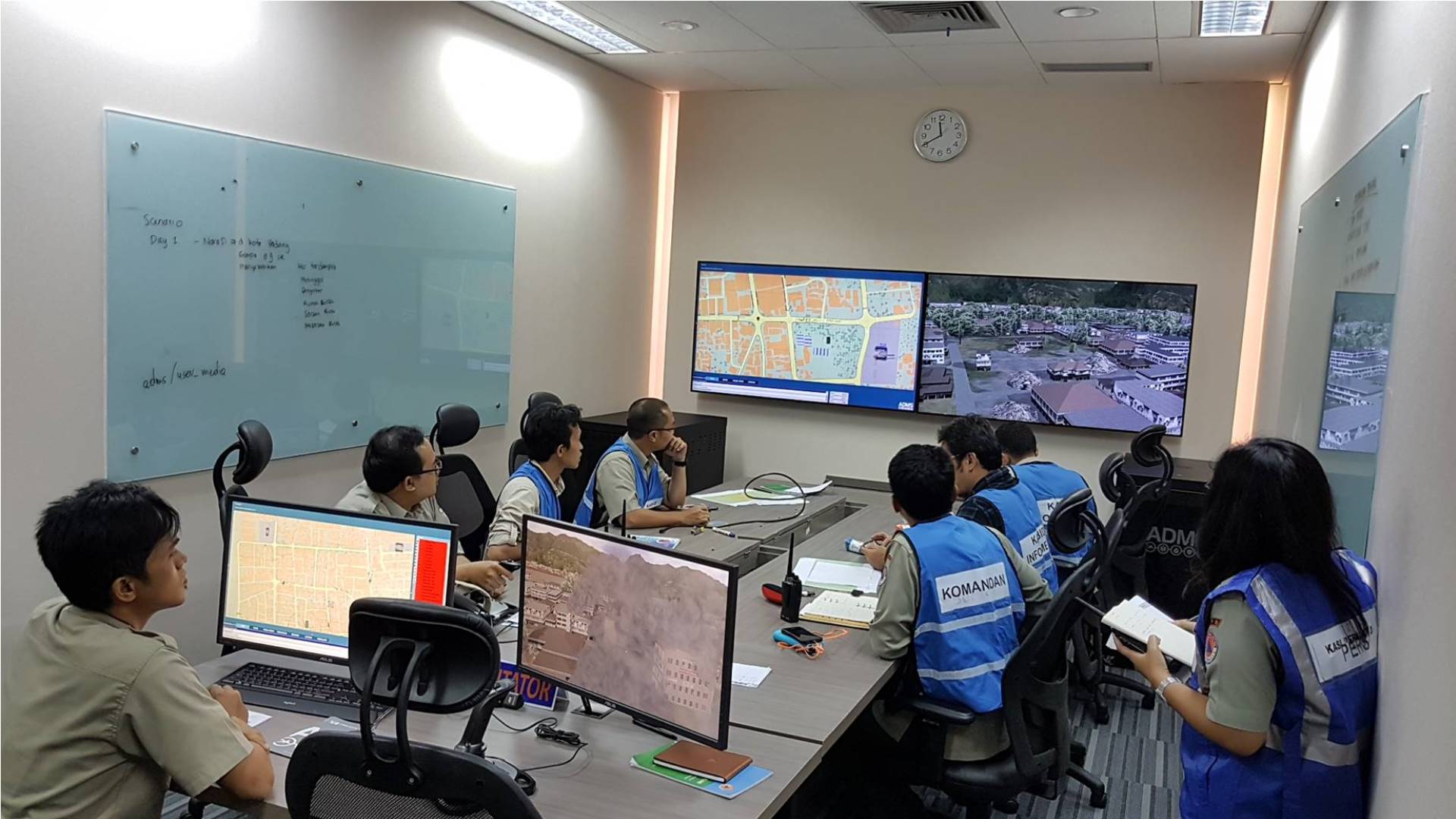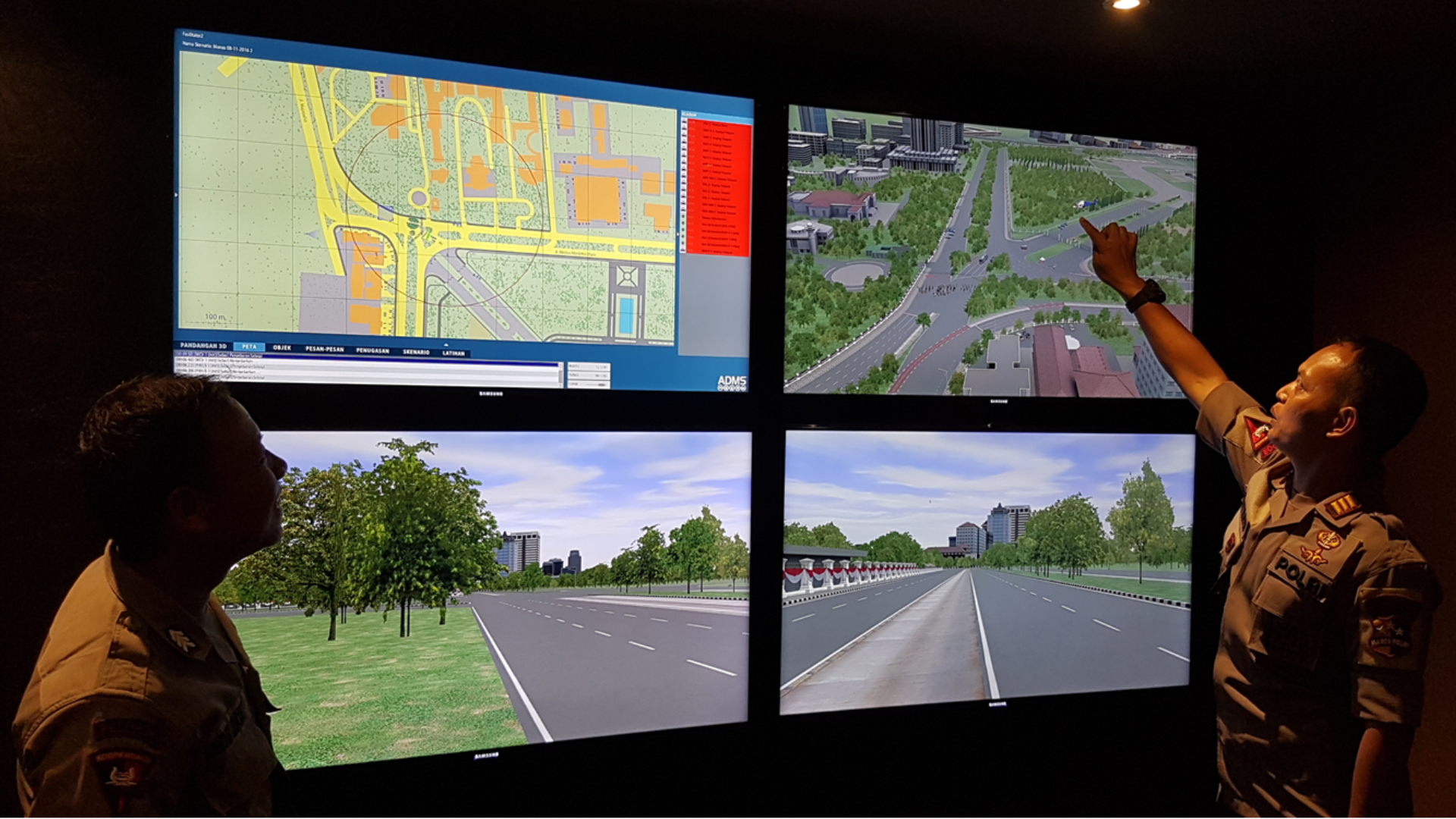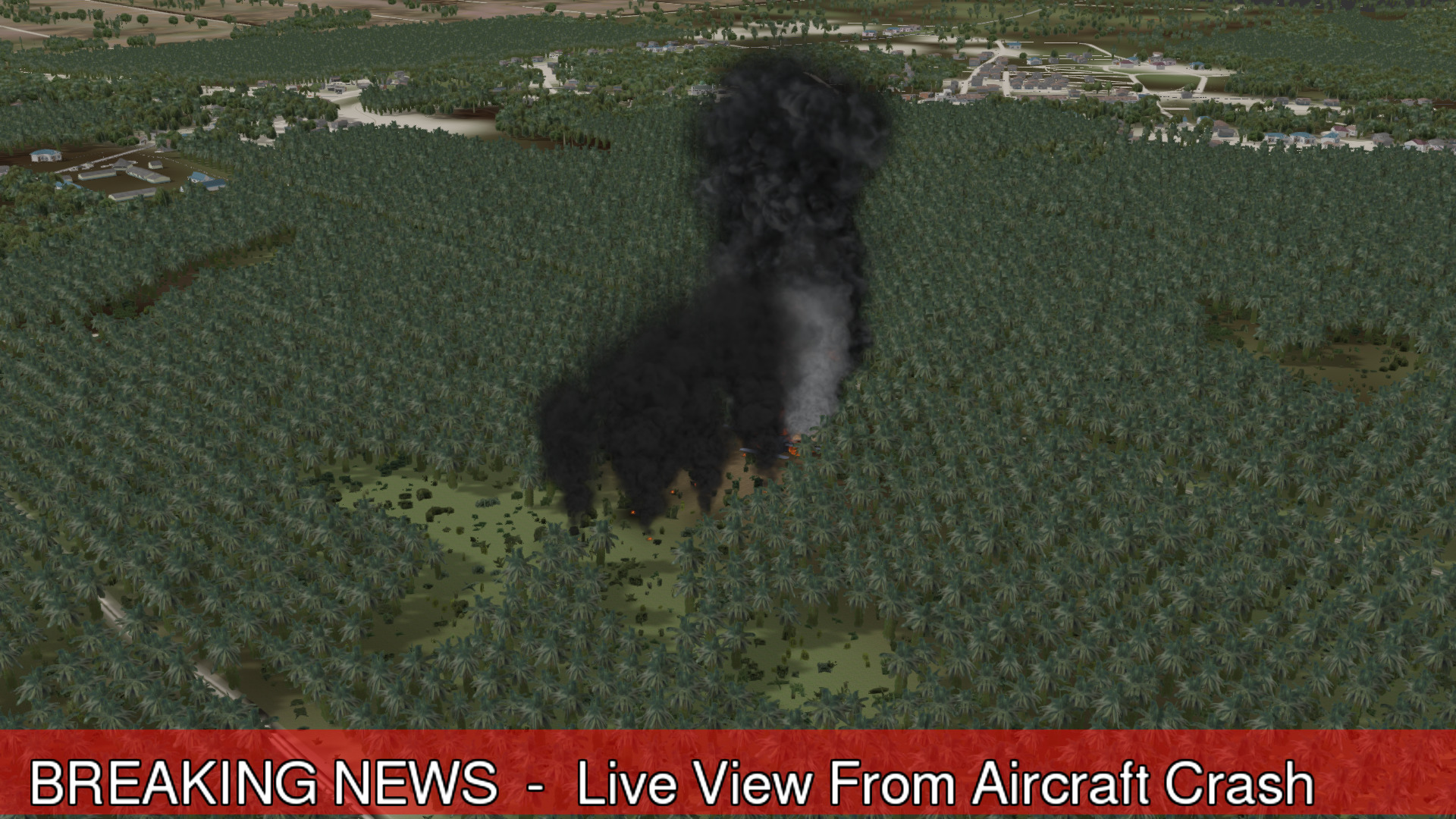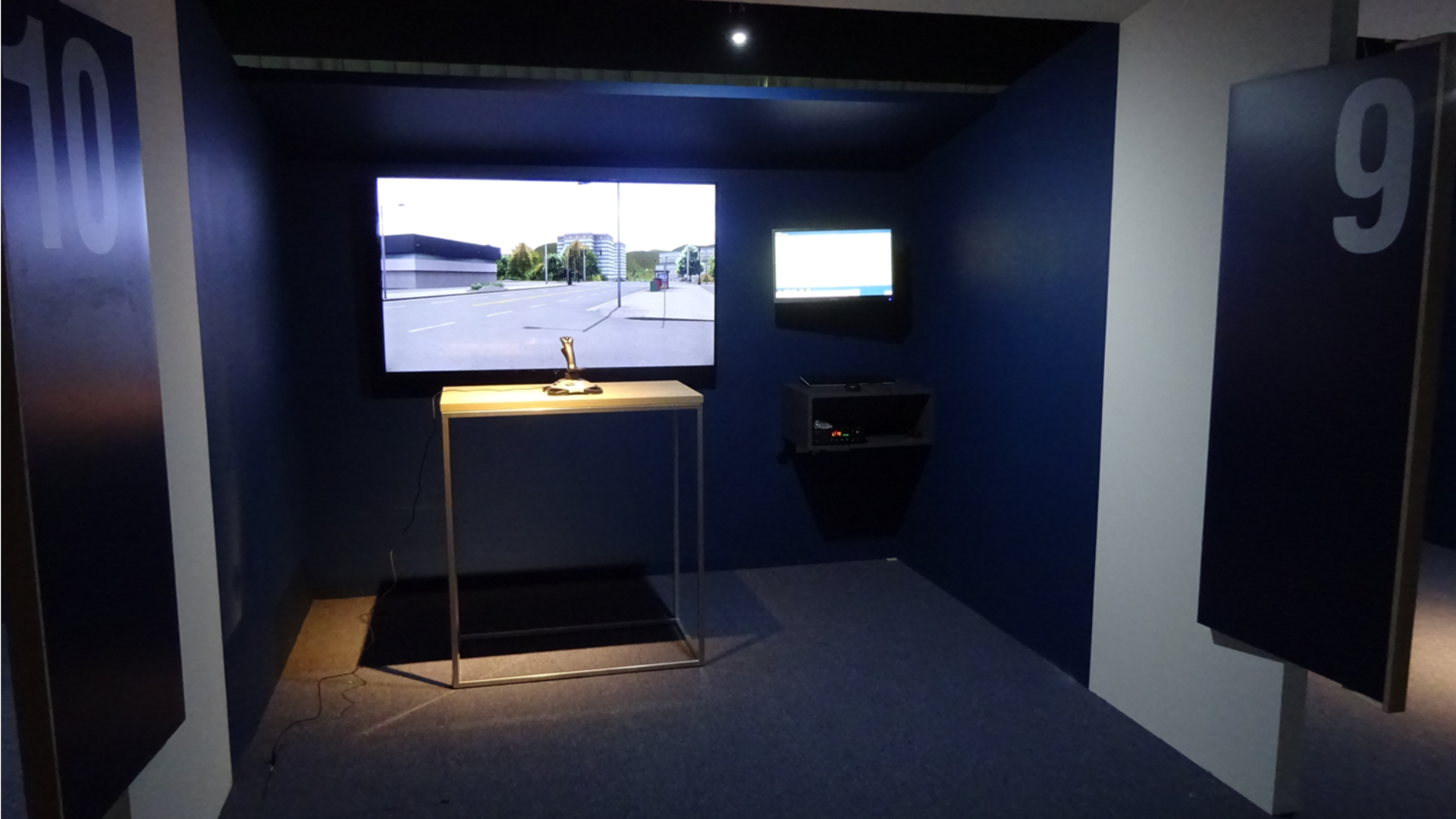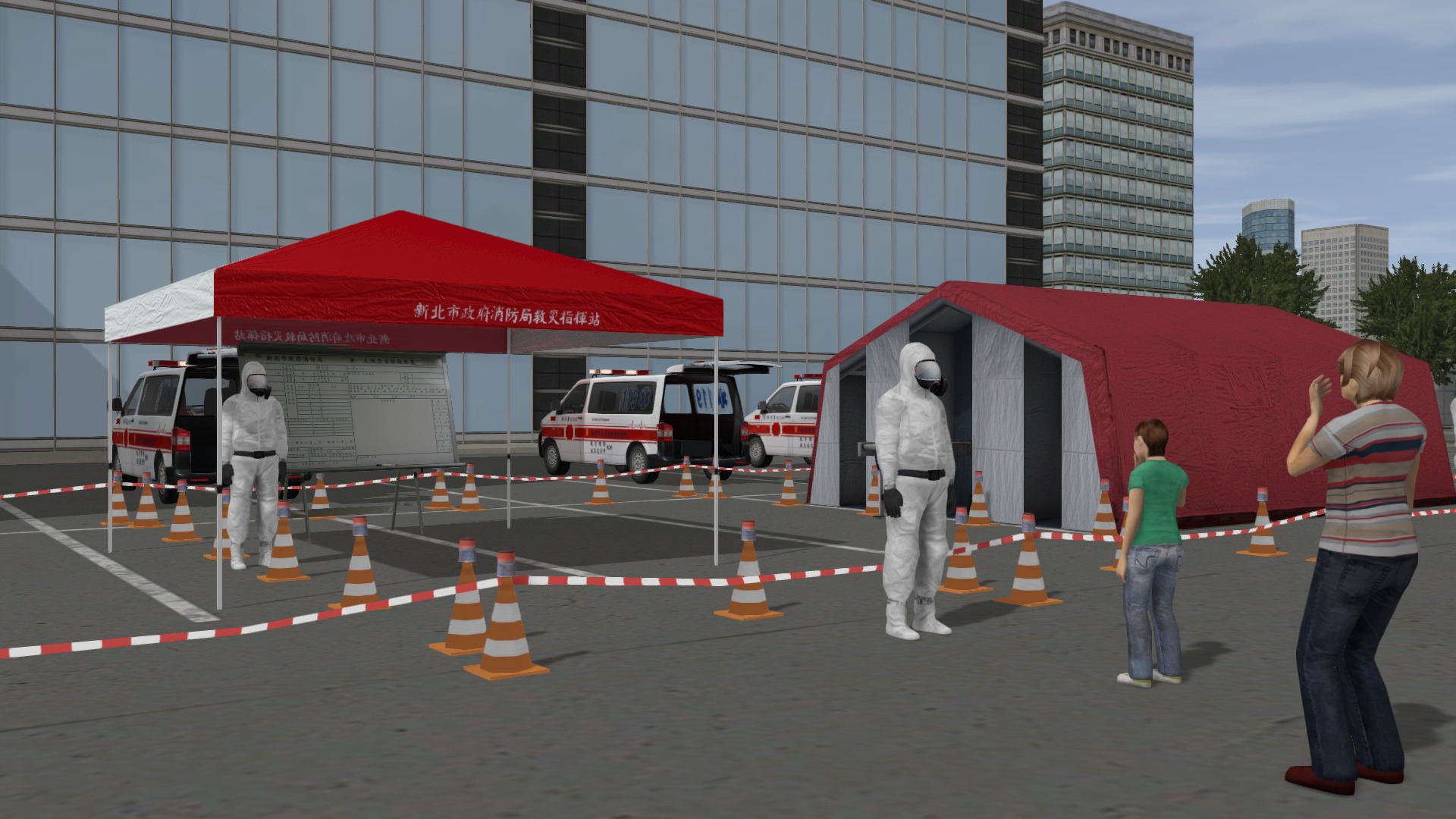ADMS COMMAND
ADMS offers an interactive realistic 3D environment for Command training on all levels. From small scale incidents with a single agency to large scale incidents that involve multi-agency communication.
COMMAND PRODUCT RANGE
There are currently three variations of our command product range. We have split this category into multiple disciplines, what differs are the viewing angles, room layouts, and training flows. ADMS remains at the core of it all and this allows everything to come together when you need to train multi-level and multi-agency scenarios, locally and remotely.
Each system can be modified to fit your training needs.
Incident Command
Trainees take the role of Incident Commander and command virtual resources.
Command Post
Trainees take place in a Command Post room, receive audio and visual information about the incident and execute commands.
Field Units
Trainees take the role as field unit, report back to the Incident Commander and execute commands.
ADMS TECHNOLOGY
Command Simulation
Trainees experience the consequences of their decisions as they would in real-life situations. Interactive decision making is demanded from the trainees, which ultimately affects the development, resolution, or escalation of the event. ADMS is open-ended, with no pre-determined endings, just like the real-life situations you will face.
The resources can be deployed by the facilitator from the Exercise Control Station (central operation) based on the commands received from the trainees. It is also possible for the trainees to deploy their resources at their Field Unit Station (local operation).
Incident Command
Trainees take place in front of a visual display as the Incident Commander in a virtual ADMS environment, where they will command virtual resources by voicing commands and walk or drive around by joystick to explore the scene.
In turn, either staff (facilitator) or another trainee as a Field Unit will input the commands from the Incident Commander. The resources will perform the commands in real-time and provide the trainees with live visual feedback of their commands. This type of training leads to a higher immersion level for trainees, and ultimately a better and more effective training experience.
COMMAND POST
Use the Command Post layout for training Mobile Command Post Operations, Emergency Operations Centers, and National Disaster Management. The Command Posts can receive live images, video, and information streams from the ADMS Exercise controlled by Incident Command units and Field Units on the scene or by facilitators.
The ADMS Command Posts allows for multi-level training for large scenarios such as natural disasters, terrorist attacks, and crowd control. Thanks to the stability of ADMS, you can run large scale exercises for hours to simulate large realistic events from beginning to end.
ADMS can be shown on multiple displays in the room with different live angles from CCTV’s, Helicopters, and more.
